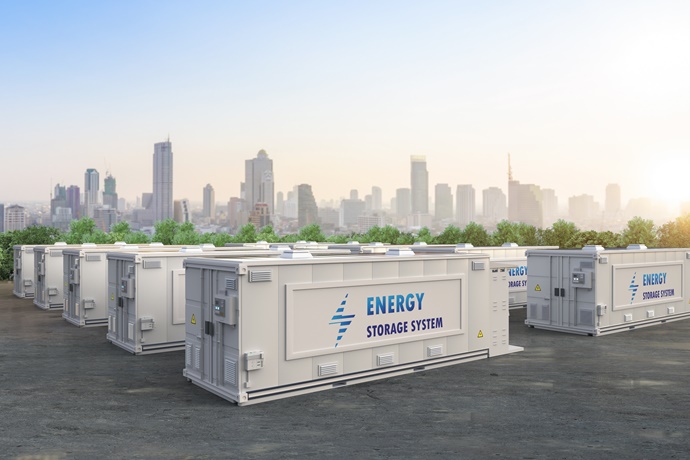Battery Energy Storage Systems (BESS) are indispensable in the shift to renewable energy. They capture surplus energy from renewable sources like wind and solar and release it when demand spikes or supply dips, thus helping to ensure a stable and reliable power grid. The battery technology is Lithium-Ion, with the dominant chemistry on new projects being Lithium Iron Phosphate (LFP) – older projects typically used Nickel Manganese Cobalt (NMC).
As leaders in the renewable energy transition grapple with maintaining grid stability amidst intermittent renewable power sources, the importance of energy storage solutions, including BESS, has surged. Markets in the US, Canada, Europe and Australia have all recognized the critical role of BESS, implementing financial incentives like the US's Inflation Reduction Act (IRA), which offers a 30% investment tax credit for standalone storage systems.
In 2021 the BESS Failure Incident Database was initiated to help inform energy storage industry stakeholders and the public. According to the most recent data, there were 15 failure incidents in 2023. Incidents range from fires in storage facilities to explosions in large-scale projects, often linked to design flaws, environmental factors or operational errors. These events highlight the need for rigorous safety standards and better risk management practices across the industry.
The sector's rapid expansion and associated risks
The BESS sector is experiencing a boom, attracting significant financial investments from new market entrants. However, this growth also brings potential risks, such as catastrophic thermal runaway fires, operational failures and lack of standardization in new battery systems and project layouts. Key questions remain about the durability, safety and future integration of these systems.
One of the main hurdles in underwriting BESS is the lack of comprehensive data on their operation, performance and failure rates. This scarcity complicates risk assessment and premium calculation for insurers. The industry's rapid growth and the introduction of new battery chemistries further amplify these challenges, requiring underwriters to stay agile and informed.
Underwriters face several challenges when dealing with BESS projects:
- Understanding and managing the risk of thermal runaway
- Recognizing the importance of augmentation to a current site and the compatibility of old and new batteries
- Staying up to date on battery technology advancements
- Ensuring safe transportation practices that meet national and international standards
- Assessing potential public safety and environmental impacts
Strategies for managing BESS risk
For sustainable growth, developers and owners should involve reputable Original Equipment Manufacturers (OEMs) in their projects and leverage qualified engineers for risk assessments.
Long-term strategies that can help boost underwriters' confidence include:
- Ensuring adequate spacing: Design layouts with ample spacing between components to mitigate fire risk. Most insurers are seeking 8-10ft clearance between rows and ideally between pairs of BESS units. This is an insurance requirement and is not found in any engineering standards.
- Developing a robust emergency response plan: Dealing with a thermal runaway incident can be treacherous. The plan should include input from the local fire brigade that recognizes dealing with a thermal runaway is different to dealing with a fire.
- Providing critical technical documents for insurers: At a minimum, insurers will want to see the results of the internationally recognized UL9540a unit test. In most cases, particularly for new cell models, they will want to also see the cell and module report. Ensure these are secured in advance of procuring insurance to prevent policy restrictions.
- Eliminating redundancy between main power transformers: For large projects, some redundancy between multiple main power transformers will lower premiums.
- Ensuring foundations are an appropriate height: Of the naturally occurring perils, flood is the biggest concern to insurers of BESS projects. Owners must ensure concrete foundations are at an appropriate height to avoid potential flood levels.
- Staying up to date on industry losses: For operational projects, owners must keep abreast of industry losses. Insurers will check that owners’ firmware is up-to-date and that mitigation strategies are in-place to avoid recent global claim scenarios.
We help you win
Amwins understands that as the sector evolves, so do the energy risks that you have to address. With the right mix of expertise, carrier partners and program access, our energy specialists stay on top of market developments to deliver quality submissions and optimal insurance solutions.
With seasoned specialists across the globe, Amwins delivers solutions for numerous classes, including power generation and renewables. And as the nation's largest wholesale broker, our specialized expertise is yours to tap into — from unparalleled market access to value-added resources and intel.


